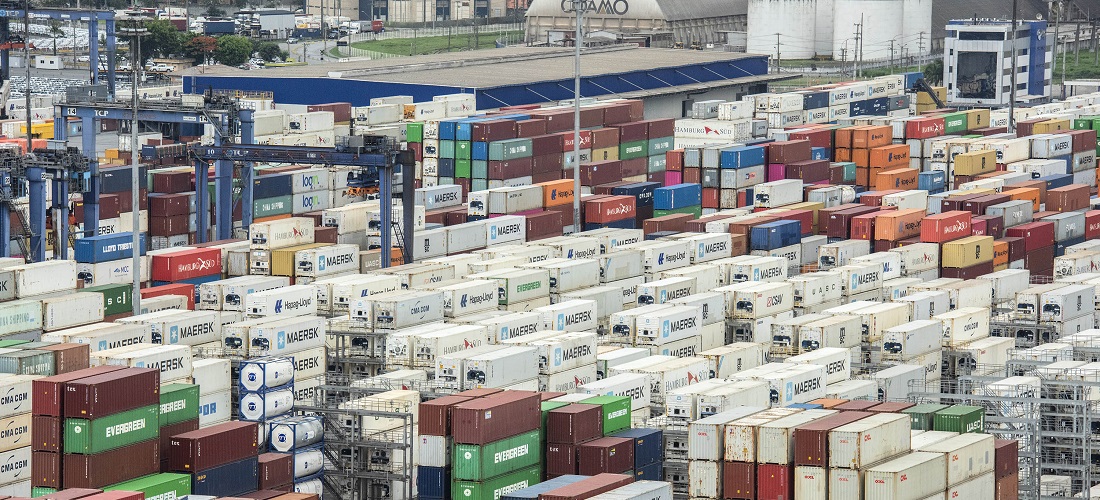
Brazil is selling less to China, but price makes up for it
Aug, 17, 2022 Posted by Gabriel MalheirosWeek 202233
Despite remaining essentially consistent in terms of values, exports to China this year lost steam. They dropped in quantity, moving in a different direction than the average and the opposite direction of other important markets. Brazilian exports to China totaled $55.1 billion from January to July this year, a 0.2% decrease from the same period last year. However, in terms of volume shipped, they fell by 12.8%. Prices remained high, rising 13.6%, offsetting the impact of the drop in quantity on export earnings to the Asian country.
China was the only destination with a quantum drop when looking at Brazil’s main commercial partners, according to data from the Foreign Trade Index (Icomex), in a bulletin from the Brazilian Institute of Economics of the Getulio Vargas Foundation (FGV Ibre). The stronger-than-expected deceleration of the Chinese economy in 2022, the fact that the Chinese started to buy more oil from Russia, and the high comparison base (2021) help explain the reduction this year, according to experts.
China has increased its purchases of products from Russia and other close partners, which displaces imports from different regions, reducing Brazil’s relative share in Chinese landings. In this new regime, Brazil is hit by oil. “There is a leak of Russian crude oil that used to go to Europe and is now starting to go more intensively to China,” points out economist Livio Ribeiro, a partner at BRCG.
See below the volume trends of Brazilian exports to China from January 2019 to June 2022. The data below is from DataLiner.
Exported volume from Brazil to China | Jan 2019 – Jun 2022 | WTMT
Source: DataLiner (click here to request a demo)
As for other Brazilian exports, according to Icomex, the volume shipped increased by 0.6%. Comparing the quantity exported from January to July to the same period of 2021, shipments to the United States grew by 3% and to the European Union by 11.9%. Exports to Argentina grew by 13.9% and for other South American countries, 14.3%. For Asia, excluding the Middle East and China, exports showed stability.
For economist Lia Valls, a researcher at Ibre, the drop in quantities shipped to the Chinese follows the deceleration of the Asian country’s economy. The high results obtained in 2021 can be explained by pushing the bar a little too high. The quantum of exports to China grew 31.1% from January to July 2020 over the same period of the previous year. In 2021, in the same period, there was a drop of 5.7%, but the shipped volume remained relatively high.
According to Lia, the performance followed the behavior of the Chinese economy, which advanced by 2.2% in 2020, when the covid-19 pandemic broke out. According to data from the International Monetary Fund (IMF), the global economy fell 3.1% that year, while advanced economies fell 4.5%. In 2021, the Chinese economy grew at an 8.1% annual rate, while the global economy grew at a 6.1% annual rate and advanced economies grew at a 5.2% annual rate.
This year, the Chinese government has maintained a 5.5% economic growth target. Still, market projections point to 4% to 4.2% growth, which is a significant slowdown for China, according to Welber Barral, a partner at consultancy BMJ.
Per the former Secretary of Foreign Trade, estimates have become more pessimistic following the release of the most recent activity data from the Asian country and the Chinese Central Bank’s reduction of interest rates earlier this week to reactivate the economy. July data showed a generalized slowdown, with a housing crisis and zero covid policy impacting industrial and retail activities.
In addition to the diversion of the demand for crude oil from Brazil to Russia, the performance of the Chinese economy is one of the factors that explain the fall in the quantum of Brazilian exports, agrees Ribeiro.
According to Ribeiro, the Chinese economy has multiple challenges in resuming robust growth. Chinese GDP grew 0.4% year on year in the second quarter, falling short of the average market estimate, and the data at the start of the third quarter was dismal. “As a result, we anticipate that the economy will struggle to achieve even 4% growth this year.” This week, BRCG reduced its Chinese GDP forecast for 2022 from a high of 3.9% to a high of 3.4%.
There is also the factor pertaining to the composition of Brazilian exports to China, according to Ribeiro, who is also an Ibre researcher. For example, the cycle of Chinese infrastructure investments may help iron ore shipments. Still, for meat and soy, which are inputs for protein production, the situation is more complicated in an economy that struggles to boost domestic demand consistently, he believes.
José Augusto de Castro, president of the Brazilian Foreign Trade Association (AEB), recalls that Chinese demand for iron ore increased significantly in 2021, contributing to the historic high prices for the commodity. This year, he says, what has been happening is an adjustment in volumes and prices. According to AEB’s projections, total Brazilian iron ore exports should fall by 10% this year against 2021. Last year, the item accounted for a third of the value exported by Brazil to China.
Source: Valor Econômico
To read the full original article, please go to: https://valor.globo.com/brasil/noticia/2022/08/17/brasil-vende-menos-para-a-china-mas-preco-compensa.ghtml
-
Grains
May, 27, 2021
0
CNA proposes subsidy plan to encourage corn production
-
Grains
Sep, 09, 2022
0
Brazilian corn exporters face bureaucracy to ship corn to China
-
Fruit
Sep, 04, 2023
0
Grape sector concerned about lack of agricultural auditors effect on exports to US
-
Jun, 09, 2021
0
Crop failure in Brazil should push orange juice stock to the limit in 2022


